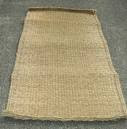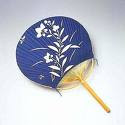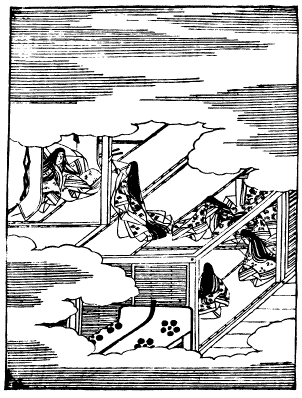[ . BACK to WORLDKIGO TOP . ]
::::::::::::::::::::::::::::::::::::::::::::::::::::::::::::::::::::::::::::::::::::::::::::::::::::
Autumn and farmers work
***** Location: Japan
***** Season: Autumn
***** Category: Humanity
*****************************
Explanation
There is a lot to be done in autumn, harvesting and preparing for winter.
Let us look at some kigo and activities of this haiku season.
LINKS are only to my own entries with more details for you.
Many words are also kigo in other seasons, when they blossom etc. Please check the main ABC index of the world kigo for further reference.
:::::::::::::::::::::::::::::::::::::::::::::::::::::::::::::::::::::::::::::::::::::::::::::::::::
Early autumn
daikon maku 大根蒔く (だいこんまく)
sowing radish seeds
Radish and its kigo
hachigatsu daimyoo 八月大名 (はちがつだいみょう) "Lord in August"
In the two months of february and august there was not so much field work to do and people used it for marriage celebrations or other ramily rituals, because they had time to travel and meet. Good food was prepared and they enjoyed the "Life of a Lord".
Especially common in Western Japan.
mame hiku 豆引く picking beans soybeans and many others
drying soy beans, daizu hosu 大豆干す
:::::::::::::::::::::::::::::::::::::::::::::::::::::::::::::::::::::::::::::::::::::::::::::::::::
Mid-autumn
awa karu 粟刈る (あわかる) harvesting foxtail millet
. . . . . awa hiku 粟引く(あわひく)
awa hosu 粟干す(あわほす)drying millet
awa utsu 粟打つ(あわうつ)threshing millet
awa mushiro 粟筵(あわむしろ) straw mat to dry millet
Millet and millet dishes
botan no newake 牡丹の根分 (ぼたんのねわけ)
dividing the roots of peonies (peony)
. . . . . botan no tsugi ki 牡丹の接木(ぼたんのつぎき)grafting peonies
. . . . . shakuyaku no newake 芍薬の根分 (しゃくやくのねわけ) difiding the roots fo herbaceous peonies
goma karu 胡麻刈る cutting sesame plants and more about sesame
goma hosu 胡麻干す(ごまほす)drying sesame plants
goma tataku 胡麻叩く(ごまたたく)"hitting " threshing seseme plants
shingoma 新胡麻(しんごま)new sesame
kurogoma 黒胡麻(くろごま)black sesame
kingoma 金胡麻(きんごま)golden sesame
gomagara 胡麻殻(ごまがら) husks/hulls of the sesame seed
hoonen 豊年 (ほうねん) bountiful harvest
toyo no aki 豊の秋(とよのあき )bountiful autumn
deki aki 出来秋(できあき)fruits of autumn
豊作(ほうさく)abundant harvest, bumper crop
ito-uri 糸瓜, 蛮瓜,布瓜 sponge gourd and related kigo
kakishibu 柿渋(かきしぶ)"persimmon dye" persimmon tannin
and how to make and use it
Kakitannin
karashi tane maku 芥菜蒔く (からしなまく)
sowing poppy seeds
. . . . . keshi maku 罌粟蒔く (けしまく)
keshi no hana poppy flowers 芥子の花(けしのはな) kigo for earlyl summer
kusabana aki maku 草花秋蒔く (くさばなあきまく)
sowing plants and flowers in autumn
kusadomari 草泊 (くさどまり) staying over night for cutting weeds
. . . . . kusayama 草山(くさやま)
In olden times, farmers went up the volcanic slopes to cut the weeds. It took them a few days so they stayed in mountain huts and shelters during this time. It was also a time for their sons and daughters to mingle freely and all looked forward to it.
Nowadays, with tractors, it is a one-day activiy and lost its former charm.
take kiru 竹伐る (たけきる) cutting bamboo
BAMBOO .. An Asian Plant
watatsumi 綿摘(わたつみ)picking cotton
Many COTTON-related kigo.
momen 木綿(もめん)cotton コットン
:::::::::::::::::::::::::::::::::::::::::::::::::::::::::::::::::::::::::::::::::::::::::::::::::::
Late autumn
aki mayu, akimayu 秋繭 (あきまゆ) silkworms in autumn
aki osame 秋納め (あきおさめ) "reaping in autumn",
a celebration after the harvest
. . . aki wasure 秋忘(あきわすれ) "forgetting autumn",
aki age 秋揚げ(あきあげ)"ending the autumn work"
aki burumai秋振舞(あきぶるまい)"celebrating in autumn"
tajimai 田仕舞(たじまい) "end of the field season"
genge maku 紫雲英蒔く (げんげまく) sowing milk vetch (clover)
Astragalus sinicus
goboo hiku 牛蒡引く (ごぼうひく) picking burdock
goboo horu 牛蒡掘る(ごぼうほる) digging for burdock
hagi kiru 萩刈る (はぎかる) cutting bushclover (bush clover)
. . . . . hagikari 萩刈(はぎかり)
hishi toru 菱取る (ひしとる) collecting water chestnuts
Trapa japonica
. . . . . hishitori 菱採り(ひしとり)
. . . . . hishi no mi toru 菱の実取る(ひしのみとる)
hishibune 菱舟(ひしぶね)ship to collect water chestnuts
yudebishi 茹菱(ゆでびし) boiled water chestnuts
. . . CLICK here for Photos !
inekari 稲刈 (いねかり) harvesting rice
one of the most important activities of the rice farmers,
drying the rice plants, ine hosu 稲干す
offering for the rice cutting sickle, kama iwai 鎌祝(かまいわい)
threshing rice, ine koki 稲扱き いねこき
and MANY MORE !
 kaya karu
kaya karu 萱刈る (かやかる) cutting miscanthus (reeds)
kaya fuku 萱葺く(かやふく)thatching a roof
kaya no nokiba 萱の軒場(かやののきば)shed to store cut miscanthus
. . . CLICK here for Photos !
. . . . . ashi kari 蘆刈 (あしかり) cutting reeds
ashikarime 蘆刈女(あしかりめ)woman cutting reeds
ashikaribune 蘆刈舟(あしかりぶね)boat to cut reeds
. . . ashibune 蘆舟(あしぶね)
ashibi 蘆火 (あしび) burning reed
kurara hiku 苦参引く (くららひく) pulling out
kurara (Sophora flavescens)
(a medical plant)
kusa enju horu 草槐掘る(くさえんじゅほる) digging for Sophora flavescens
kusuri horu 薬掘る (くすりほる) "digging for medicine"
kusuri tori 薬採る(くすりとる)collecting medicine
yakusoo horu 薬草掘る(やくそうほる)
digging for medicinal plants
akane horu 茜掘る(あかねほる) digging for madder (Rubia cordifolia)
akane 茜草 (あかね) madder, Indian Madder
Rubia cordifolia. common name for girls.
plant kigo for early autumn
.....
kuwa kukuru 桑括る (くわくくる) binding the mulberries
The branches have to be cut down in autumn when the leaves get brownish, because otherwise the branches will spread in all four directions and the stumps are covered with straw and bound for the winter.
kuzu horu 葛掘る (くずほる) digging for arrowroot
. . . . . kuzune horu 葛根掘る(くずねほる)
. . . . . kuzu hiku 葛引く(くずひく)pulling out arrowroot
kyosaku 凶作 (きょうさく) poor harvest, poor crop
. . . fusaku 不作(ふさく)
kanbatsuden 旱魃田(かんばつでん) dry fields
maki tozasu 牧閉す (まきとざす) "closing down the open grazing land"
umasage, uma sage 馬下げ(うまさげ)getting the horses down
makigaeri 牧帰り(まきがえり) coming home from the grazing land
uma sageru 馬下げる (うまさげる) getting the horses down, is sometimes listed as a kigo for early winter.
matsu teire, matsu te-ire 松手入 (まつていれ) cutting the pine trees
In your garden, usually a hedge to ward off strong wind and decorative pines in the temple gardens. Mostly done by professional gardeners. They climb up high into the trees to cut of old or unwanted branches.
natane maku 菜種蒔く (なたねまく) sowing rapeseed
na no hana 菜の花 rape blossoms kigo for spring
senburi hiku 千振引く (せんぶりひく) pulling Japanese green gentian
(Swertia japonica), amedicinal plant
. . . . . senburi toru 千振採る(せんぶりとる)
tooyaku hiku 当薬引く(とうやくひく)pulling Japanese green gentian
senburi hosu 千振干す(せんぶりほす)drying Japanese green gentian
tanetori 種採 (たねとり) taking seeds
Usually from flowers, they are kept in a sachet and are sown again next year.
tokusa karu 木賊刈る (とくさかる) cutting scouring rush
Equisetum hyemale
tsuru taguri 蔓たぐり (つるたぐり) pulling vines
tsuru kiri 蔓切(つるきり)cutting vines
tsuru hiki 蔓引(つるひき) pulling vines
After the harvest of gourds and beans, the leftover vines in the fields are now pulled out.
yonabe 夜業 (夜なべ) night work at home
... tawara ami 俵網 (たわらあみ) making straw bags
komedawara amu 米俵編む(こめだわらあむ)making straw bags for rice
sumidawara amu 炭俵編む(すみだわらあむ) making straw bags for charcoal
:::::::::::::::::::::::::::::::::::::::::::::::::::::::::::::::::::::::::::::::::::::::::::::::::::
All autumn
kakashi 案山子 (かがし) scarecrow
bird scarers, tori odoshi 鳥威し, guardian of the fields 田守 (たもり) tamori and more
kinuta 砧 (きぬた) fulling block, washing mallet,
and related kigo
shishigaki 鹿垣 (ししがき) fence against wild boars and other animals
kabiya 鹿火屋 かひや hut for the fire watch
kabiya mori 鹿火屋守(かひやもり)guardian of the fire watch hut
shinginu 新絹 (しんぎぬ) new silk
silk of this year, kotoshi ginu 今年絹(ことしぎぬ)
new loom, shinhata 新機(しんはた)
shuukoo 秋耕 (しゅうこう )plowing the fields in autumn
 soozu
soozu 添水 そうず "animal chaser"
. . . soozu 僧都(そうず)、bottanko ばったんこ、botta ばった、
yamada no suuzu 山田の僧都(やまどのそうず) "animal chaser in the mountains and in the fields"
. . . . . karausu, kara-usu 唐臼(からうす)"mortar"
usagi tsuzumi 兎鼓(うさぎつづみ) "rabbit drum" (an expression used in Kyushu)
A kind of bamboo pole that fills with water and drops down with a sound that scares away the animals.
Shishiodoshi, shishi odoshi 鹿威し the deer scarer
.......................................................................
Tobacco plant / Tabakpflanze
Nicotiana tabacum
The tobacco plant was introduced by Portuguese sailors around 1542.
waka tabako 若煙草 (わかたばこ, ワカタバコ) "young tobacco"
shin tabako 新煙草(しんたばこ) new tobacco
kotoshi tabako 今年煙草(ことしたばこ)tobaco from this year
tabako hosu 煙草干す(たばこほす)drying tobacco
kake tabako 懸煙草(かけたばこ)hanging tobacco leaves to dry
nawa tabako 縄煙草(なわたばこ) tobacco bound in a rope
kigo for all autumn
tabako no hana 煙草の花 (たばこのはな) tabacco flower
. . . . . hanatabako 花煙草(はなたばこ)
kigo for early autumn
. . . CLICK here for Photos !
iwa tabako, iwatabako 岩煙草 (いわたばこ) "cliff tobacco"
. . . . . iwana, iwajisha いわな、いわぢしゃ
Conandron ramondioides
kigo for late summer
. . . CLICK here for Photos !
..................................
kigo for mid-autumn
omoigusa 思草 (おもいぐさ) "remembering plant"
..... nanbangiseru, nanban kiseru 南蛮煙管(なんばんぎせる)
"pipe of Southern Babarians"
..... kiserugusa, kiseru kusa きせる草(きせるぐさ)
Aeginetia indica
kiseru 煙管 traditional Japanese pipe
tobacco pouch 刻み煙草入れ
rauya, raoya 羅宇屋 repairman of tobacco pipes
.......................................................................
yasai no aki tanemaki 野菜の秋蒔き (やさいのあきまき)
sowing seeds of vegetables in autumn
. . . . . akimaki yasai 秋蒔野菜(あきまきやさい)
kabu maku 蕪蒔く(かぶまく)sowing turnips
goboo maku 牛蒡蒔く(ごぼうまく)sowing burdock
soramame uu 蚕豆植う(そらまめうう)planting fava beans
*****************************
Worldwide use
*****************************
Things found on the way
*****************************
HAIKU
:::::::::::::::::::::::::::::::::::::::::::::::::::::::::::::::::::::::::::::::::::::::::::::::::::
*****************************
Related words
KIGO LISTS about
autumn and humanity
*****
Autumn hunting and fishing
*****
Autumn festivals and ceremonies
*****
Autumn in the home
*****
Autumn games, entertainment, school
*****
Food and Drinks in Autumn
MORE
Autumn and Humanity Kigo
. . . Autumn (aki, 秋) A season for haiku !
. Farmers work in all seasons
. Planting, harvesting and preparing food in SPRING kigo
*****
sumidawara 炭俵 (すみだわら) sack for wrapping charcoal
kigo for all winter
:::::::::::::::::::::::::::::::::::::::::::::::::::::::::::::::::::::::::::::::::::::::::::::::::::::::
[ . BACK to DARUMA MUSEUM TOP . ]
[ . BACK to WORLDKIGO . TOP . ]
:::::::::::::::::::::::::::::::::::::::::::::::::::::::::::::::::::::::::::::::::::::::::::::::::::::::

 gangi 雁木 (がんぎ ) wooden snow protection roof along the road
gangi 雁木 (がんぎ ) wooden snow protection roof along the road 









































